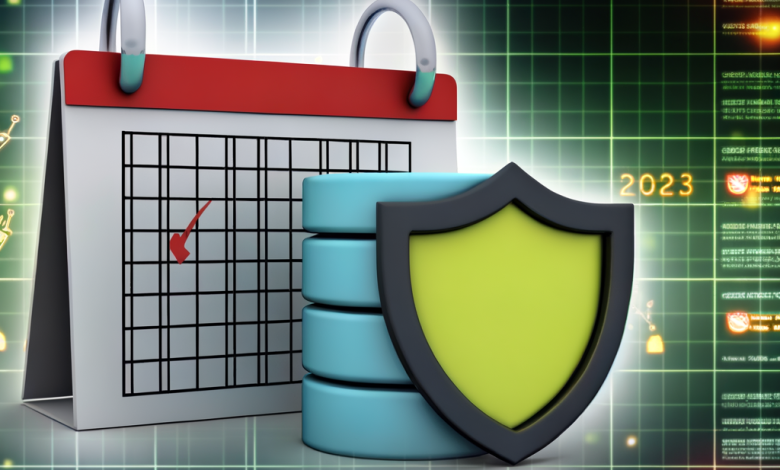Unlocking Data Protection: Essential MSSQL Security Best Practices for 2024

In today’s digital landscape, data protection has never been more critical. As we approach 2024, understanding and implementing effective security protocols for your mssql databases is essential. With increasing threats and evolving technology, staying informed on the latest mssql security best practices can make all the difference. By prioritizing security, you not only safeguard sensitive information but also enhance mssql performance tuning and overall mssql database management. Let’s dive into the strategies that will keep your data secure this year and beyond.
Main Points
- Emphasize the importance of strong authentication methods.
- Implement regular security audits and vulnerability assessments.
- Utilize encryption for data at rest and in transit.
- Keep your mssql software updated to avoid vulnerabilities.
- Establish clear roles and permissions within your mssql environment.
Understanding the Importance of MSSQL Security in a Data-Driven World
In a world where data reigns supreme, the security of your MSSQL database cannot be an afterthought. It’s the bedrock of trust and reliability for any organization. When we talk about MSSQL database management, we’re not just discussing tools; we’re delving into the lifeblood of business intelligence, and any breach can spell disaster. So, why is MSSQL security so crucial?
- Data Integrity: Protecting your data means safeguarding its accuracy and consistency. With lax security, data corruption or loss can occur.
- Regulatory Compliance: Many industries face strict regulations regarding data protection. Failing to meet these requirements can lead to hefty fines.
- Trust Building: Clients expect their information to be handled securely. A breach can shatter customer trust and tarnish your reputation.
Additionally, focusing on MSSQL performance tuning and MSSQL query optimization can enhance security measures. A well-tuned system not only improves efficiency but also reduces vulnerabilities. However, one can be blinded by the intricacies of coding and algorithms, overlooking basic security protocols. In the end, a robust security strategy is crucial in this data-driven era, not just an option!
html
Top Threats Facing MSSQL Databases and How to Mitigate Them
In the modern digital landscape, MSSQL databases stand as vital pillars of data management. Yet, they face a myriad of threats that can undermine their integrity. These challenges, ranging from SQL injection attacks to improperly configured access controls, require vigilance and an understanding of best practices.
Threats and Vulnerabilities
First, SQL injection remains a prevalent danger. This occurs when malicious users inject harmful code into vulnerable input fields. It’s essential to sanitize user inputs and employ parameterized queries. Furthermore, outdated software can expose databases to security holes. Keeping your system updated is non-negotiable.
Mitigation Strategies
Another significant risk involves privilege escalation. Users often hold more permissions than necessary. Therefore, employing the principle of least privilege minimizes this risk. Regular audits of user roles can help maintain a solid security posture.
In conclusion, securing NoSQL databases requires proactive measures. While the landscape is fraught with challenges, a proactive approach can turn vulnerabilities into minimized risks. Stay informed and keep your systems protected.
Implementing Robust Access Controls and Authentication Mechanisms
In today’s digital landscape, securing sensitive information is not just an option; it’s a necessity. Therefore, organizations must focus on robust access controls that go beyond mere passwords. Consider this: hacking attempts often target poorly defended systems. The challenge lies in creating a layered security model that can withstand these constant threats.
Access Control Strategies
A multifaceted approach is essential. Role-based access, for instance, minimizes risks by ensuring that individuals only access the information necessary for their roles. Moreover, implementing two-factor authentication enhances security by adding an extra layer, making it harder for unauthorized users to gain access. However, user experience shouldn’t be sacrificed; finding that sweet spot between security and convenience is crucial.
Many forget that education plays a vital role. Regular training sessions can empower employees to recognize potential threats and understand authentication processes. It’s not enough to set controls; you must also cultivate a culture of awareness and vigilance. It’s about creating a resilient environment where security is everyone’s responsibility.
Regular Maintenance and Monitoring: Key to Sustaining MSSQL Security
In the realm of MSSQL security, it’s easy to get lost in the labyrinth of protocols, patches, and permissions. Regular maintenance, however, stands as a beacon guiding us through this complexity. Imagine your database as a garden; without consistent care, it becomes overrun with weeds. Thus, dedicating time to routinely check and monitor your database is not just prudent, it’s imperative.
The Importance of Consistency
Establishing a routine can seem daunting at first, but the benefits are worth the effort. By observing the following practices, you can enhance your MSSQL security:
- Regular Backups: Always back up your data regularly to avoid catastrophic loss.
- Patch Management: Keep your system up-to-date with the latest security patches.
- Access Reviews: Regularly review who has access to your database to ensure permissions align with your current needs.
Also, don’t underestimate the power of monitoring. You should watch for unauthorized access attempts and unusual activities. Logging and alerting mechanisms can act as sentinels, safeguarding your precious data.
In essence, maintaining a secure MSSQL environment requires diligence and adaptability. So, roll up your sleeves and dive into the world of database stewardship, for in the delicate balance of security and accessibility, your data shall thrive.
Future-Proofing Your Data Protection Strategy with Emerging Technologies
In today’s fast-paced digital world, protecting your data has become more than just a good idea; it’s a necessity. You might wonder, how do you ensure your strategy remains effective as technologies evolve? The answer lies in embracing emerging technologies.
Embracing Change
To begin with, consider the power of AI and machine learning. These innovative tools can analyze patterns, identify threats, and respond faster than any human could. It might sound a bit intimidating, but think of it as having a digital watchdog keeping your information safe.
Staying Ahead
Additionally, blockchain technology offers an unprecedented level of transparency and integrity. Imagine a world where data breaches become a relic of the past. However, the journey doesn’t stop there. You need to remain vigilant, continuously adapting to emerging threats. After all, cybersecurity is not a one-and-done task; it’s a marathon, not a sprint. The landscape keeps changing, and so must your strategies.
Let’s embark on this journey together, blending innovation with caution to future-proof your data protection strategy.
Conclusion
In conclusion, understanding and implementing MSSQL security best practices is essential for maintaining the integrity of your data and protecting sensitive information. It’s not just about having a secure environment; rather, it’s about fostering a culture of security awareness among all stakeholders. By prioritizing these practices, you can significantly reduce potential risks and ensure that your database remains safe from unauthorized access. Ultimately, security is an ongoing journey. As threats evolve, so too must our strategies. Therefore, staying informed and ready to adapt is key. Let’s commit to building a more secure future together, emphasizing the importance of proactive measures in safeguarding our valuable data assets.
Frequently Asked Questions
What are the best practices for securing SQL Server?
Best practices for securing SQL Server include implementing strong authentication methods, using the principle of least privilege for user permissions, regularly updating and patching the server, encrypting data at rest and in transit, and maintaining a comprehensive backup strategy.
How can I securely configure SQL Server authentication?
To securely configure SQL Server authentication, use Windows Authentication wherever possible, enforce strong password policies, disable the sa account if not needed, and consider implementing multi-factor authentication.
What is the principle of least privilege and why is it important?
The principle of least privilege means granting users and applications only the permissions necessary to perform their tasks. It is important because it minimizes the risk of accidental or malicious actions that could compromise the database security.
How often should I update and patch my SQL Server?
You should regularly update and patch your SQL Server, ideally as new patches are released. It is recommended to apply security updates as soon as they become available, and maintain a schedule for testing and applying non-security updates.
What encryption options are available for SQL Server?
SQL Server offers several encryption options, including Transparent Data Encryption (TDE) for encrypting data at rest, Always Encrypted for protecting sensitive data within the database, and SSL/TLS for encrypting data in transit.




